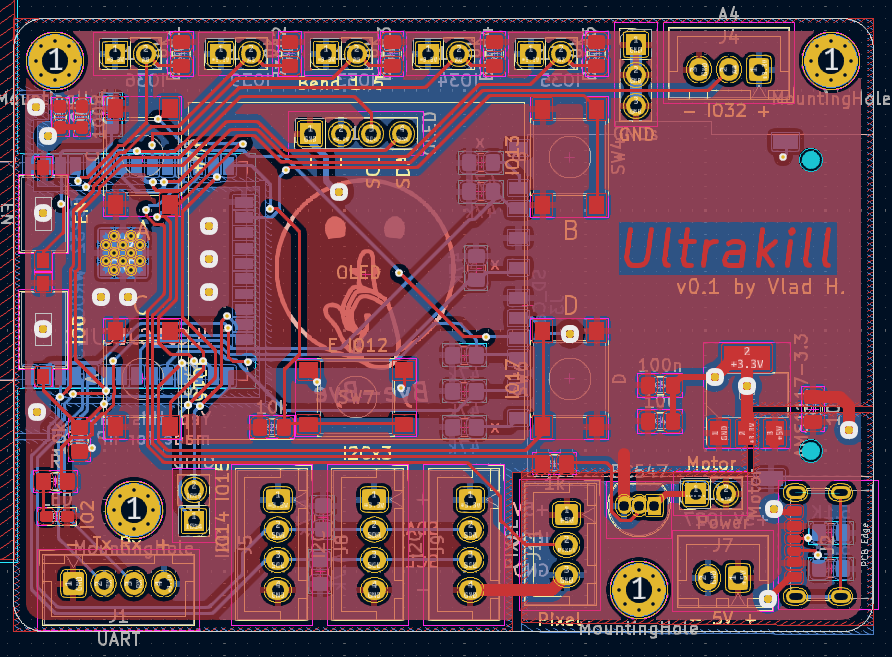As a fun exercise, I have decided to take my PCB design skills a bit further. In preparation for a design course that I have been taking, I designed an optimized board. I knew the requirements by checking the already present information for the course and started designing.
Being based on a ESP-32 module, it enables high-performance embedded computing, while also allowing for a WiFi or Bluetooth connection. Furthermore, it includes an I²C OLED screen on-board and five buttons for user interaction, one being placed under the screen. There are three I²C headers, 5 analog inputs with integrated pull-ups, a Neopixel connector and a motor connector that uses a transistor as a switch.

A 5V regulator and a USB-C power plug are also available and most things connect via XT headers, allowing for a clean appearance, thanks to tidy wire harnesses that plug right in. There are other less significant features on the board as well.
Some features that could have been included, but I will play around with on the next iteration are a Li-Po charge controller and an integrated serial-to-USB converter. The first one would have been a useful addition, but the latter didn’t matter as much, as I was primarily using the Bluetooth connection for communication. Elegant harnesses allowed me to easily connect a FTDI adapter to the board whenever needed.
As a nice conclusion, I have used the board to build the “Air Guitar Guitar”. This was for the Intelligent Interactive Products course, offered by the Industrial Design Faculty of TU/e. While it was more than overkill for the purpose (ahem, you could call it… Ultrakill), the board was a breeze to use. Check the product here.
Small note: about the name
I have been asked about the name of this board multiple times. It has no connection whatsoever to the award-winning video game with the same name. I came up with the name Ultrakill because I felt this development board was more than overkill for the purpose I’ve made it for.
